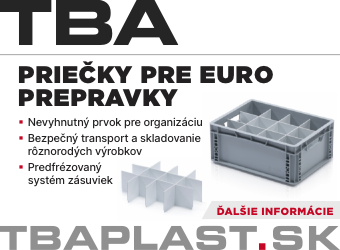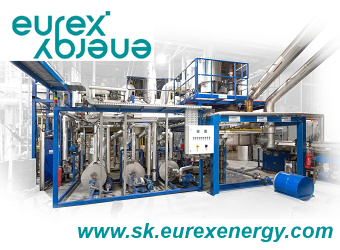Weekly commodity price report
Here are the market prices of various types of commodity plastics PE-LD, PE-HD, PP and PS in Central and Eastern Europe with a delay of 5 weeks. The data was processed by our partner myCEPPI.
Are you interested in current prices for commodity plastics? You can order Weekly polymer price reports from our editors.
Prices for this week 15/2018
Mixed price tendencies,
The following factors influenced “commodity” polymer prices and price expectations last week:
- BRENT oil price 67.11 USD/barrel, dropping prices
- EUR/USD: 1.2281, strong Euro
- NAPHTHA: 571,46 USD/t, stable prices
- Increasing olefin monomer prices in April:
- Ethylene C2: +10 €/t,
- Propylene C3: +10 €/t,
- Decreasing SM price: -125 €/t
- Market in conciliation
During the first short week after Easter polymer producers came up with their first offers. In case of LDPE we have received information about increasing, in case of PP about unchanged, slightly increasing, and while in case of PS about dramatically dropping prices.
It is true of all polymer grades that converters will slowly be forced to buy in April. As a result of the so far retained demand their feedstock inventories dropped significantly. As of the second half of April there is no possibility to keep waiting. This was to feel as early as this week in case of PPC and HDPE. Due to this the season seems to start with a delay of one month. So far LDPE is an exception, for which demand has dropped significantly during the last 3-5 months. In particular the demand for ‘virgin” LDPE has dropped. Though plastic converters using LDPE run at full capacities, but the feedstock structure used has changed significantly. Because of the fierce price competition recycled LDPE is being used to an ever increasing extent, even exceeding 50%. Supply is abundant since China prohibited the import of plastic wastes. In this way European recyclers are forced to sell their products in Europe. ‘Virgin’ LDPE supply is growing as well and will grow continuously also in the second half of the year. Due to the fact that a significant part of the PE sold and planned to sell so far to China as a result of the trade battle between the USA and China is also directed to Europe. This reduces further PE prices but LDPE prices in particular. For the time being HDPE is the winner of the season, yet this will also be affected by the oversupply, on one hand from the import from outside of Europe, on the other hand due to the increasing production in Central-Europe. The renewed HDPE plant of Rompetrol (capacity 70 kt/year) being suitable for the production of bimodal product is expected to be restarted soon. But this does not affect the spring-summer season yet.
PS consumers have calculated properly, monomer prices dropped (-125 €/t). Producers operate with a price drop by 90-125 €/t. With little success so far. Converters would like to have more in case of all three PS grades.
Polyolefin grades
LDPE producer offers followed the price drop in March. Early April compared to early March the typical producer price drop is 20-40 €. This is nothing else but the typical price of the last week of March. In Poland the lowest price range is 1,100-1,150 €, while in the other regions the typical price range is 1,120-1,170. For the time being demand is low. The final price ranges will be outlined by the middle of next week. For the time being the relative goods shortage resulting from the maintenance at HIP-Petrohemija curbs the drop of prices in the central and southern region, yet due to the broad supply further price reduction is still possible in April.
In case of HDPE there is relative shortage on the market. The supply is short. This is due to three factors: on one hand due to the one month shutdown at the Serbian producer, on the other hand also MOL group can supply its customers to a limited extent only, thirdly availability is short also at Unipetrol, applying to IM grades in particular. In this way prices have started to increase slightly, in the central and southern region alike we have measured prices in a range of 1,080-1,150 €, while in Poland these effects were not that sharp, and the supply was also broader. In this way Polish prices are still in a range of 1,030-1,120 €. Though the local HDPE producer tried a significant price increase (+20-30 €/t) he has not succeeded yet.
In case of HDPE pipe (100) polymer producers announces officially a price increase by 20-30 €/t to their buyers. But the buying constraint is the lowest here, the warehouses of converters are almost full. Due to this it is highly probable that only a price increase following monomer prices by 10 € will be accepted on the market.
For the time being LLDPE C4 prices do not change, the typical price range is 1,080-1,150 €. Supply is good and broad.
Final mLLDPE prices for April are expected next week only, producers came up with a slight price increase following monomer prices, yet the final result will probably be roll-over.
PPH price reduction came to a halt. What is more the Romanian producer announced a price increase by 20 Euro. Other producers, also the Czech and Polish announced price increase. The higher price increase by 30 € is unsuccessful, yet a price increase by about 10-20 € seems to be a probable scenario in April. Supply is good, in spite of the fact that Unipetrol operates with decreased capacity. Prices start also in Poland from 1,080 €. The typical price range is 1,080-1,200 €, depending on the grade, application area and melt index.
The PPC market is also getting dynamic, producers proposed a price increase by 0-30 €, in the first half of the month an increase by 0-15 Euro is probable. In parallel with the drop of converter inventories demand is expected to liven up in the second half of the month, in this way after the 15th also another slight price increase is possible. For the time being the broad import supply is still palpable first of all in Poland. In this way PPC from Iran is already available at a price starting from 1,170 €, while the price of materials from South-Korea start from 1,210 €. The price range of producers in Central-Europe is 1,230-1,290 €/t, depending on the grade and melt index. Expectedly also import prices will catch up on the higher price level.
On the PPR market there is a slight price increase by 10-20 Euro. Converters do not accept prices higher than this. The typical price range is 1,270-1,350 €. The dynamics of demand will be manifested only during the week ahead of us. But in April we already expect good demand, real spring season.
The prices of the last week are presented in the table below (full truck load 20-22.5 t):
Grade name | Typical polymer price ranges in the last week of March 2018, Central Europe (€/ton) | Typical polymer price ranges in the first week of April 2018, Central Europe (€/ton) |
HDPE BM | 1,040-1,180 | 1,040-1,180 |
HDPE Film | 1,040-1,180 | 1,040-1,180 |
HDPE IM | 1,030-1,160 | 1,030-1,160 |
HDPE Pipe (100) | 1,350-1,460 | 1,370-1,460 |
LDPE Film | 1,100-1,250 | 1,100-1,250 |
LDPE GP | 1,110-1,230 | 1,110-1,190 |
LLDPE C4 | 1,100-1,160 | 1,100-1,160 |
PPC | 1,180-1,300 | 1,200-1,310 |
PPH IM | 1,100-1,230 | 1,080-1,200 |
PPH Raffia | 1,080-1,220 | 1,080-1,180 |
PPR | 1,240-1,340 | 1,260-1,340 |
GPPS | 1,400-1,600 | 1,400-1,500 |
HIPS | 1,500-1,680 | 1,450-1,600 |
EPS | 1,750-1,800 | 1,650-1,730 |
Polystyrene grades
The expectations of EPS converters came true. The price of SM has dropped significantly, by 125, polymer producers came up with a proposal to reduce prices by 90-120 €. Converters are still waiting. They would like to get back something from the margin losses of the last months and they expect producers to reduce prices to an extent exceeding SM by 130-140 €. This is an interesting game: converters produce continuously, first of all insulation material producers, they inventories are declining due to the retained purchasing strategy of the last month. They must buy. Polymer producers have got significant stocks, they are forced to sell. The final result of the game will be probably a price reduction following monomer prices, in case of larger buyers a further drop by -10, -20 € is possible. The probable price range is 1,650-1,730 €.
GPPS and HIPS producers reported a price reduction by 90-105 €. But in line with the broad supply, a more significant final price reduction following SM prices will be typical. An exception to this will be European producers only, who still have “debts” toward their buyers because of former shutdowns. One of the positive results of the price reduction in Europe is that price ranges came to be significantly narrower, as the prices of products imported from outside of Europe cannot follow volatile price movements. The typical price range will be in case of GPPS 1,400-1,500 €/t and in case of HIPS 1,450-1,580 €/t. Yet final prices will be visible during the week ahead.
| Type | Price |
|---|---|
| HDPE blow molding | 1109 € / t |
| HDPE film | 1110 € / t |
| HDPE injection molding | 1111 € / t |
| HDPE pipe (100) | 1400 € / t |
| LDPE film | 1159 € / t |
| LDPE general purpose | 1166 € / t |
| PP co-polymer injection molding | 1260 € / t |
| PP homo-polymer fiber | 1151 € / t |
| PP homo-polymer injection molding | 1162 € / t |
| PPR | 1301 € / t |
| GPPS | 1478 € / t |
| HIPS | 1598 € / t |
| EPS | 1730 € / t |
myCEPPI – a new voice and new approach on the plastics industry consulting and business intelligence market. With our expert advice, you can get a detailed, up-to-date and tailor-made picture of the Central and Eastern European plastics market and its main trends, data, news and key players.
Our services rely on our personal, regular and in-depth relations with players of the CEE plastics industry.
Each month, we conduct hundreds of interviews and telephone calls with industry players – plastics converters, traders, resin manufacturers – and we are also present at the biggest regional plastics trade fairs and conferences.
The information we collect in the process forms the basis of our weekly price report and market analysis; it feeds into our plastics industry company database; and it serves as the starting point for our multi-level consulting services for companies that need help sizing up, entering or navigating a specific market.
Our experts possess decades of plastics industry experience, as well as fluency in several regional languages.
Our partners include
- key players of the CEE plastics industry – the resin
- master-batch and machinery manufacturers
- distributors, and plastics converters that shape market trends across the region.
We would be happy to welcome you as a partner; please do not hesitate to contact us!
(László Büdy, Managing director, head of consulting)
Price history
- 2024:
- 2023:
- 2022:
- 2021:
- 2020:
- 2019:
- 2018:
- 2017:
Latest Classifieds
For Sale: PP regrind black, MFI 10
15.10.2024 | ID: 202419944
Top AdvertTo purchase: PP homopolymer for recycling
20.11.2024 | ID: 202420101
To purchase: LDPE foil for recycling
20.11.2024 | ID: 202420100
Cooperation: Wanted: PE-PP dirty granulates from ground
19.11.2024 | ID: 202420097
To purchase: LDPE film in bales
19.11.2024 | ID: 202420096
-
18.11.2024 | ID: 202420093
-
18.11.2024 | ID: 202420092
-
18.11.2024 | ID: 202420091
-
18.11.2024 | ID: 202420090
To purchase: PP homopolymer for recycling
20.11.2024 | ID: 202420101
To purchase: LDPE foil for recycling
20.11.2024 | ID: 202420100
To purchase: LDPE film in bales
19.11.2024 | ID: 202420096
To purchase: PA 6/66 GF 30 regrind
18.11.2024 | ID: 202420089
To purchase: Plastic scrap from production
18.11.2024 | ID: 202420081
-
18.11.2024 | ID: 202420078
-
16.11.2024 | ID: 202420076
To purchase: Plastic scrap from production
11.11.2024 | ID: 202420053
To purchase: PA 6/66 GF 30 regrind
11.11.2024 | ID: 202420043
For Sale: PP regrind black, MFI 10
15.10.2024 | ID: 202419944
Top Advert-
18.11.2024 | ID: 202420093
-
18.11.2024 | ID: 202420092
-
18.11.2024 | ID: 202420091
-
18.11.2024 | ID: 202420090
For Sale: PP-COPO white regranulate
18.11.2024 | ID: 202420088
-
18.11.2024 | ID: 202420087
For Sale: HDPE regranulate - natur/white
18.11.2024 | ID: 202420086
For Sale: HDPE regranulate - natural
18.11.2024 | ID: 202420085
Upcoming Events
25.11.2024 - 28.11.2024 | Erbil
26.11.2024 - 29.11.2024 | Shenzhen
28.11.2024 - 30.11.2024 | Riga
04.12.2024 - 07.12.2024 | Istanbul
Plastics Recycling Show India 2024
04.12.2024 - 06.12.2024 | Mumbai
13.12.2024 - 16.12.2024 | Yangon
07.01.2025 - 09.01.2025 | Düsseldorf
World Future Energy Summit 2025
14.01.2025 - 16.01.2025 | Abu Dhabi
22.01.2025 - 23.01.2025 | Paríž
19.11.2024
Plastic, Printing & Packaging, Africa 2024
20.11.2024
Plastics & Rubber Indonesia 2024
20.11.2024
25.11.2024
26.11.2024
Job offers
Business - technical representative of professional tools - the whole SR - ant s.r.o.
20.11.2024
Obchodno-technický zástupca spoločnosti LIFOCOLOR, s.r.o.
11.11.2024
Production worker Brno - LIFOCOLOR, s.r.o.
06.11.2024
Commercial - technical representative, western Slovakia - Wermaly s.r.o.
05.11.2024
Production operator - inspection of plastic products - ESOX-PLAST s.r.o.
30.10.2024
Logistics dispatcher for plastic moldings - JASPLASTIK-SK spol. s.r.o.
30.10.2024
Sorter - adjuster of injection moldings - Plasted spol.s r.o.
14.10.2024
Adjuster - AIS Automotive Interior Systems Slovakia s.r.o.
11.10.2024
Moulding Machines Setter junior - Nanogate Slovakia s.r.o.
09.10.2024
Branch Dictionary







